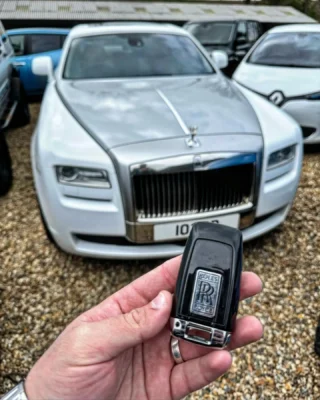Understanding Car Key Transponder Programming
In today's automotive landscape, the integration of innovative innovation has become associated with vehicle security. Among the most considerable improvements in this location is the introduction of transponder keys. Car key transponder programming is an essential process that guarantees vehicles are protected from unapproved access while offering benefit to owners. This short article explores what transponder keys are, how they work, the programming process, and answers to some often asked concerns.
What is a Transponder Key?
A transponder key is a kind of ignition key that consists of a small embedded microchip. This chip interacts with the vehicle's immobilizer system. Transponder keys are designed to boost vehicle security by preventing hot-wiring and unauthorized engine starts.
Key Features of Transponder Keys:
- Embedded Microchip: Each key includes an unique code that represents the vehicle's ignition system.
- Immobilizer System: This system recognizes the key's unique code and allows the engine to begin just if the proper key is used.
- Improved Security: Transponder keys are substantially more difficult to duplicate than standard keys, reducing the danger of theft.
How Transponder Keys Work
Transponder keys run on an uncomplicated principle of radio frequency recognition (RFID). When the key is inserted into the ignition or brought near the vehicle, the following sequence takes place:
- Signal Transmission: The vehicle's ignition system sends a radio signal to the transponder key.
- Code Response: The ingrained chip in the key gets this signal, triggers, and sends back its distinct code.
- Verification: The vehicle's computer system validates the gotten code. If it matches the kept code, the engine will begin; if not, the engine stays debilitated.
Benefits of Transponder Technology:
- Improved theft avoidance.
- Benefit of keyless vehicle beginning (in some systems).
- Decreased costs associated to insurance premiums due to boosted security procedures.
The Car Key Transponder Programming Process
Programming a car key transponder is a critical action that permits a new key to communicate with the vehicle's immobilizer system. The procedure can differ based upon the make and model of the car however generally includes the following actions:
Steps Involved in Transponder Key Programming:
- Obtain a New Transponder Key: Owners must first acquire a blank transponder key suitable with their vehicle.
- Gain Access To the OBD-II Port: For modern vehicles, programming normally needs an On-Board Diagnostics (OBD-II) scanner that connects to the OBD-II port.
- Turn on the Ignition: The ignition should be turned to the "On" position without beginning the engine. This permits the system to recognize that a new key is to be programmed.
- Follow Programming Procedure: Depending on the vehicle, follow the specific programming steps offered by the producer, usually laid out in the owner's manual. This may include pushing specific buttons in a specific order.
- Test the Key: After programming, it's vital to evaluate the key by attempting to begin the engine. If car key extraction , the key is correctly programmed.
Tips for Successful Programming:
- Consult an expert locksmith or dealer for intricate programming procedures.
- Guarantee battery levels in the key fob and vehicle are enough.
- Follow the directions closely to avoid errors.
Common Issues with Transponder Key Programming
Regardless of the apparently straightforward procedure, numerous concerns may occur during programming. Below are some typical obstacles:
- Key Compatibility: Using an incompatible key can result in programming failures.
- Faulty Equipment: A malfunctioning OBD-II scanner might prevent access to the programming menu.
- Weak Key Batteries: Insufficient power in the key fob can disrupt interaction.
Often Asked Questions (FAQs)
1. Can I set my transponder key myself?
While numerous lorries enable DIY programming, some designs require specific equipment or software application. If uncertain, it's best to consult an expert locksmith or your vehicle dealer.
2. What if I lose my transponder key?
If a transponder key is lost, it's recommended to call a licensed automotive locksmith or your dealership for a replacement. They can configure a brand-new key based upon your vehicle's VIN (Vehicle Identification Number).
3. How much does it cost to configure a transponder key?
The cost differs commonly, depending upon the vehicle make and design, and whether you select to go through a car dealership or a locksmith. Prices usually vary from ₤ 50 to ₤ 150.
4. What occurs if my transponder key quiting working?
If your transponder key stops working suddenly, it could be due to a dead battery or issues with the vehicle's immobilizer system. It's recommended to have both the key and the vehicle examined by an expert.
5. How typically should I change transponder key batteries?
Transponder key batteries ought to be replaced every 2 to 3 years, though this can vary based upon use. Indications of a passing away battery consist of problem starting the vehicle or the key fob not operating at all.
Car key transponder programming is an essential process for contemporary vehicle security and convenience. Understanding how transponder car key extraction and how they are configured can empower vehicle owners to manage their vehicle security effectively. As technology continues to evolve, remaining informed about these developments will assist owners secure their properties and ensure their automobiles run efficiently.
Summary Table: Key Features of Transponder Keys
| Feature | Description |
|---|---|
| Embedded Microchip | Contains an unique code for vehicle identification |
| Immobilizer System | Prevents unapproved engine begins |
| Improved Security | Hard to duplicate compared to standard keys |
With developments in innovation, the value of understanding and efficiently handling car key transponder systems can not be overstated. Enhanced vehicle security not just safeguards your investment but likewise ensures assurance on the roads.

